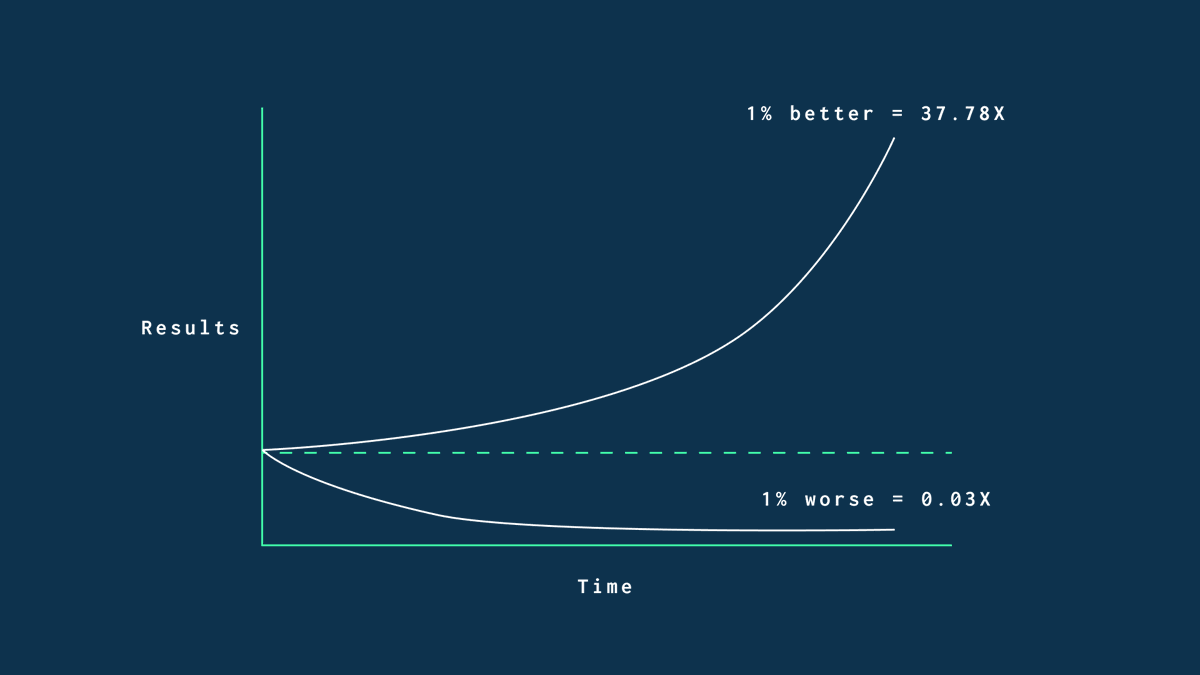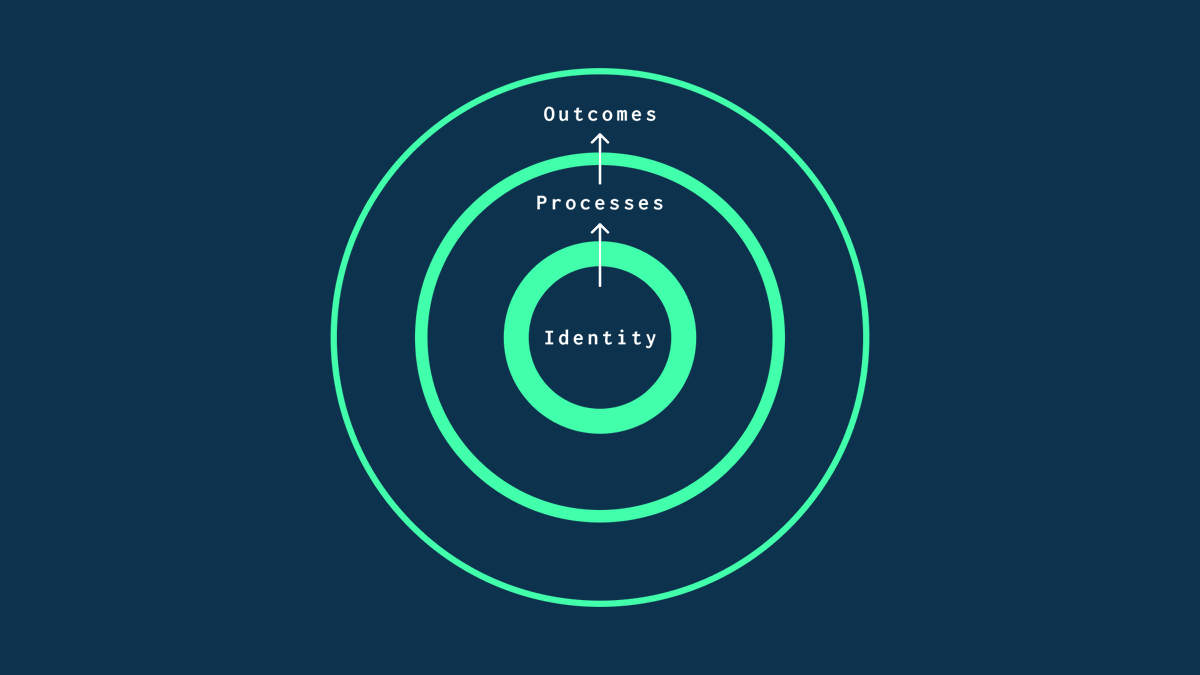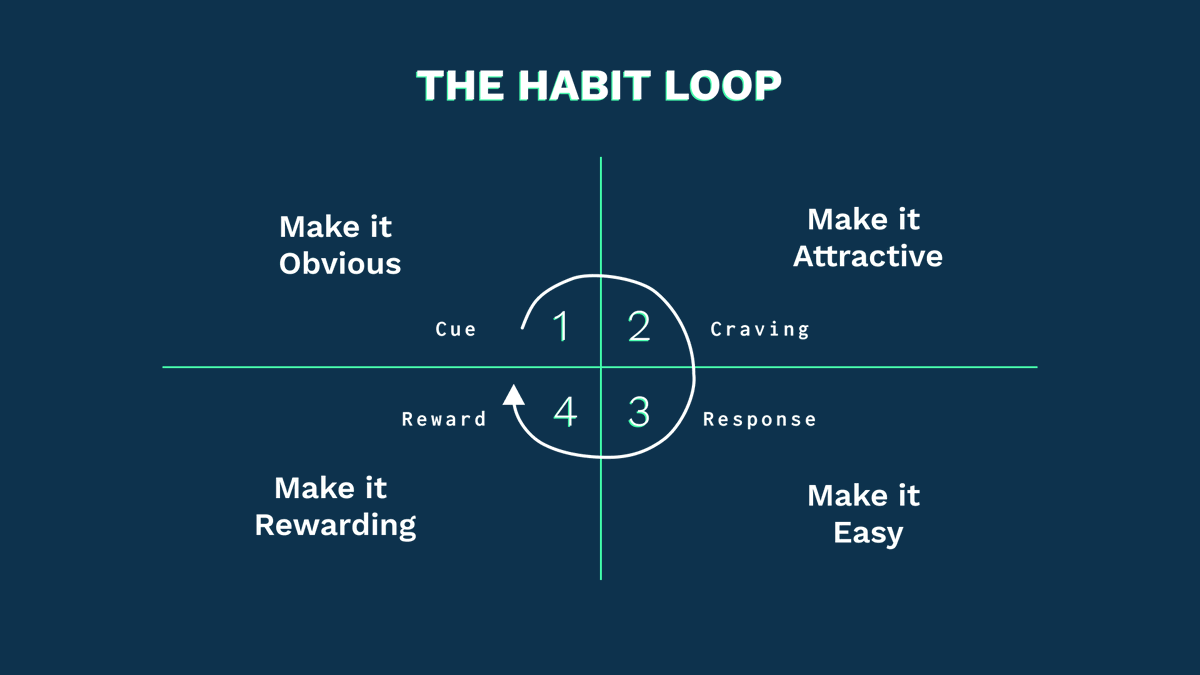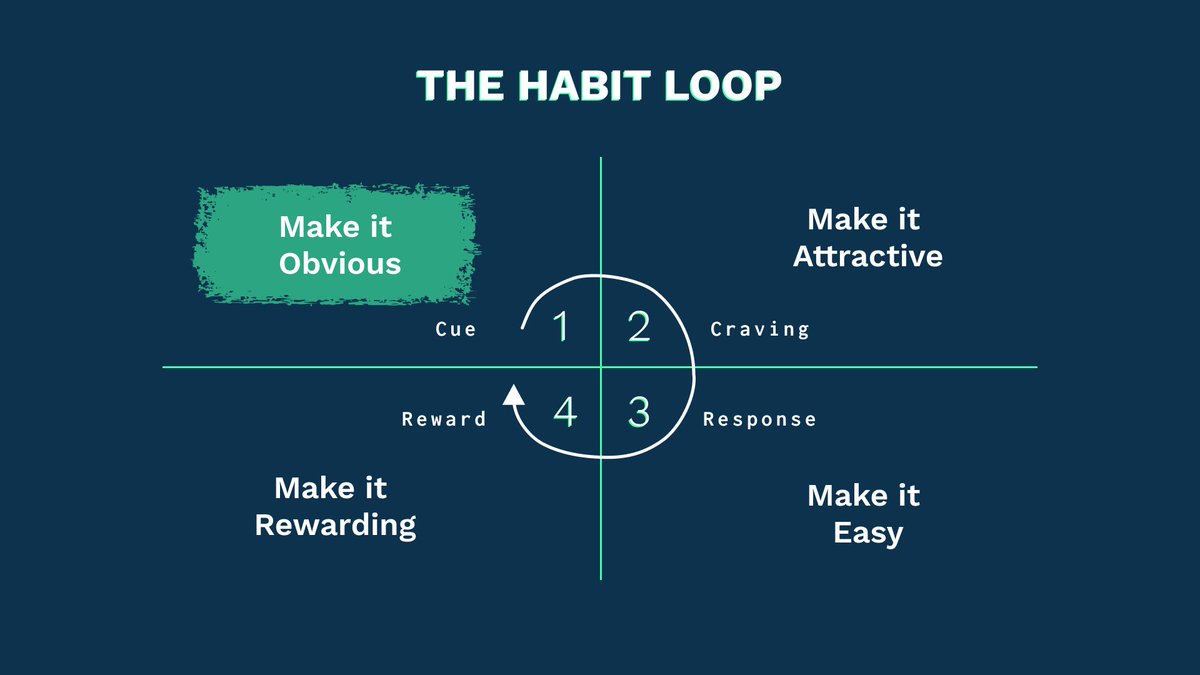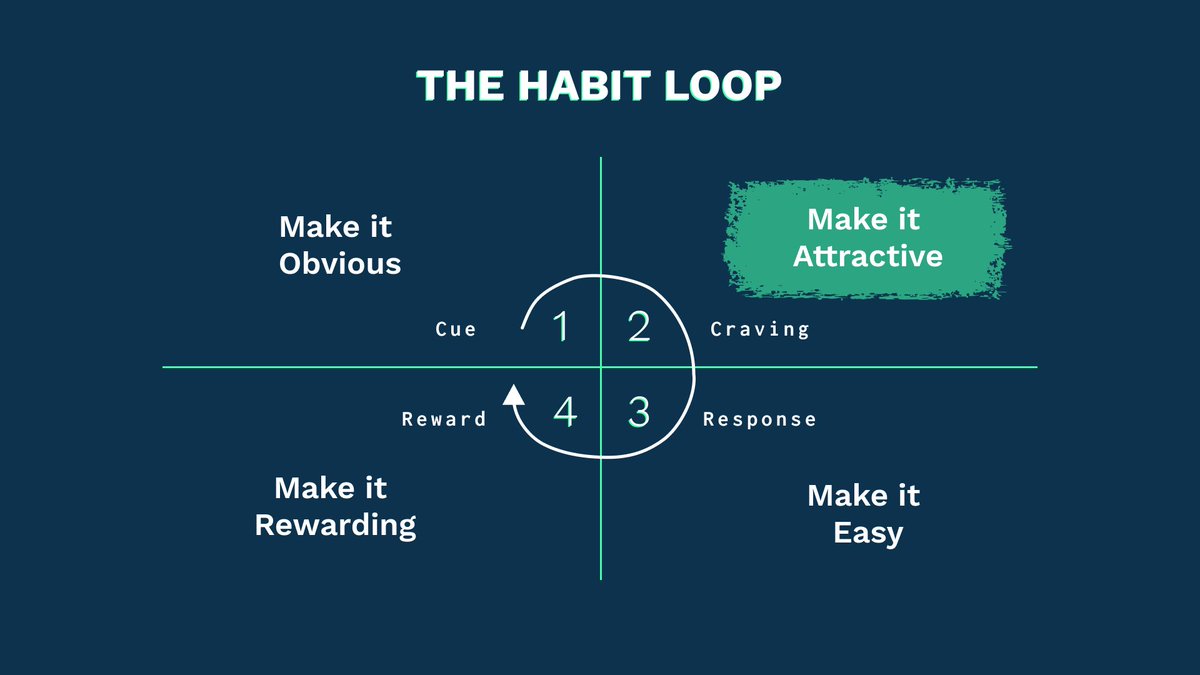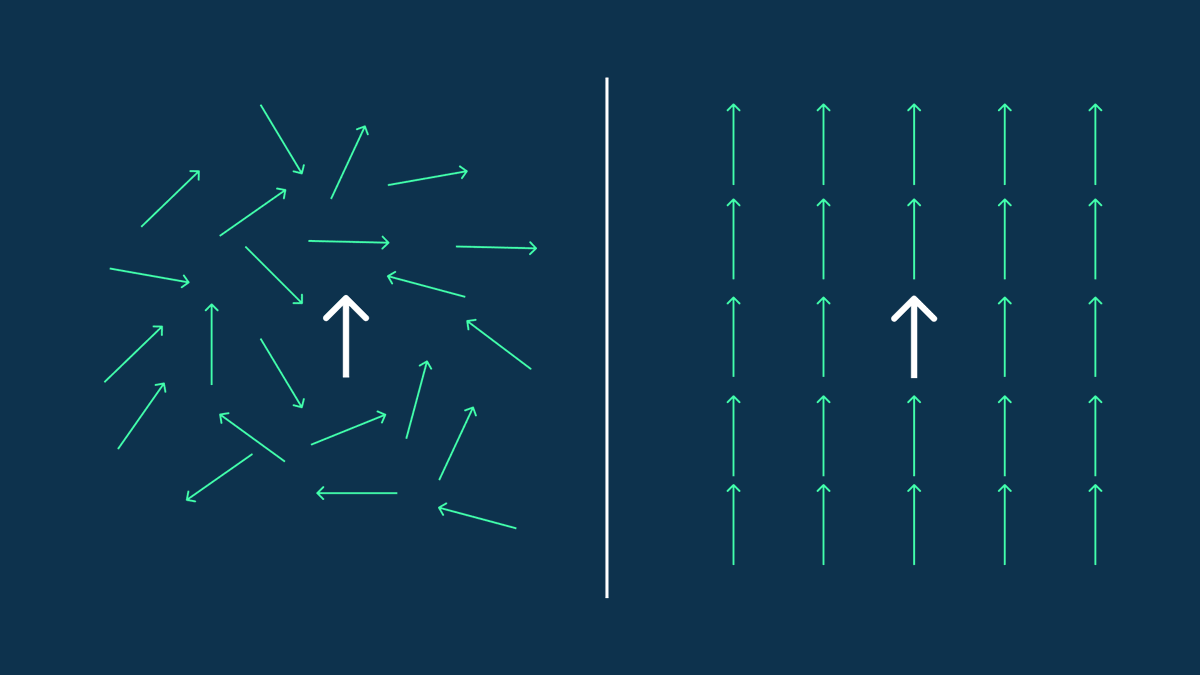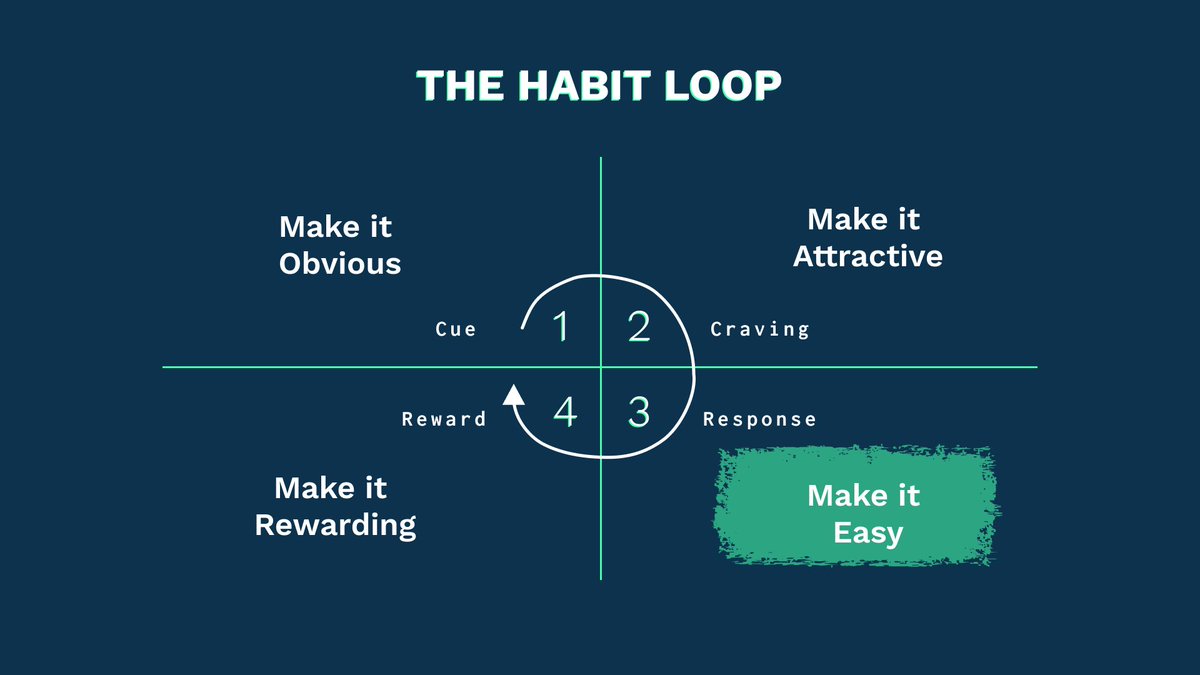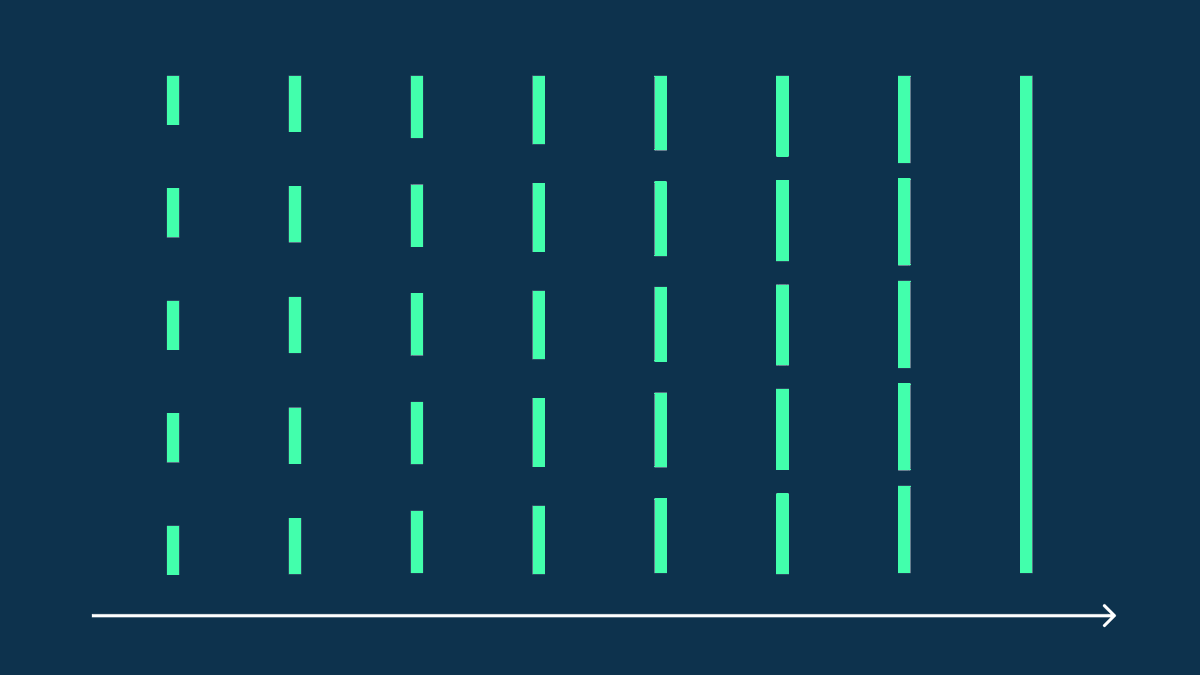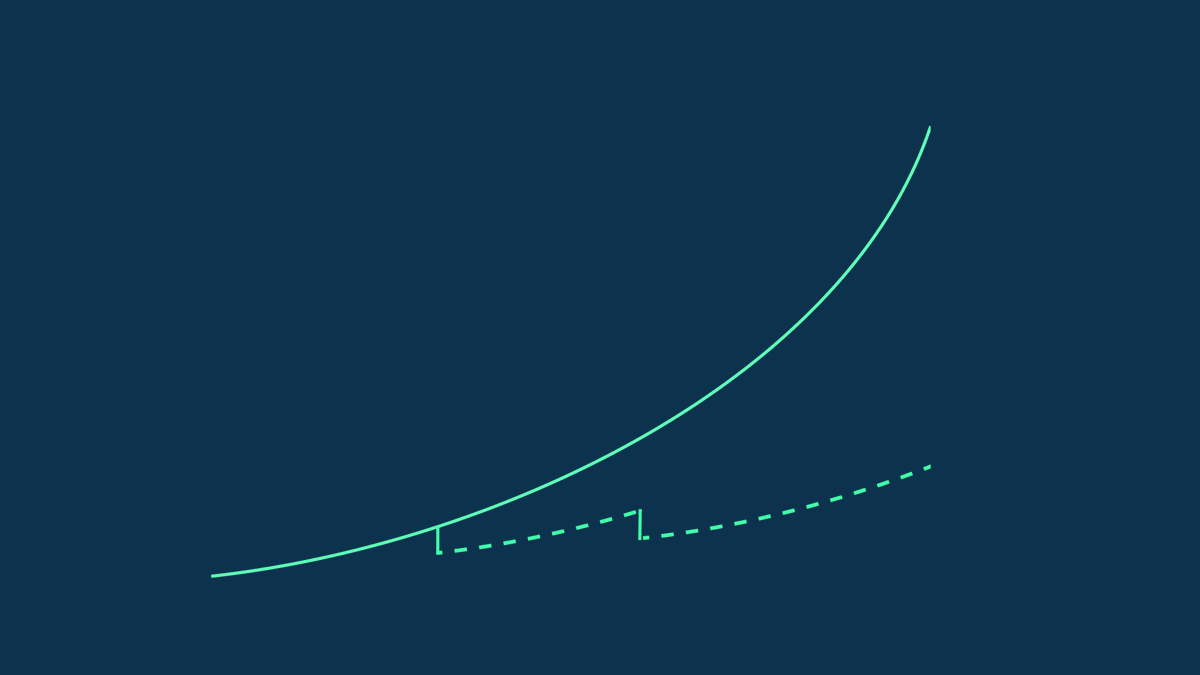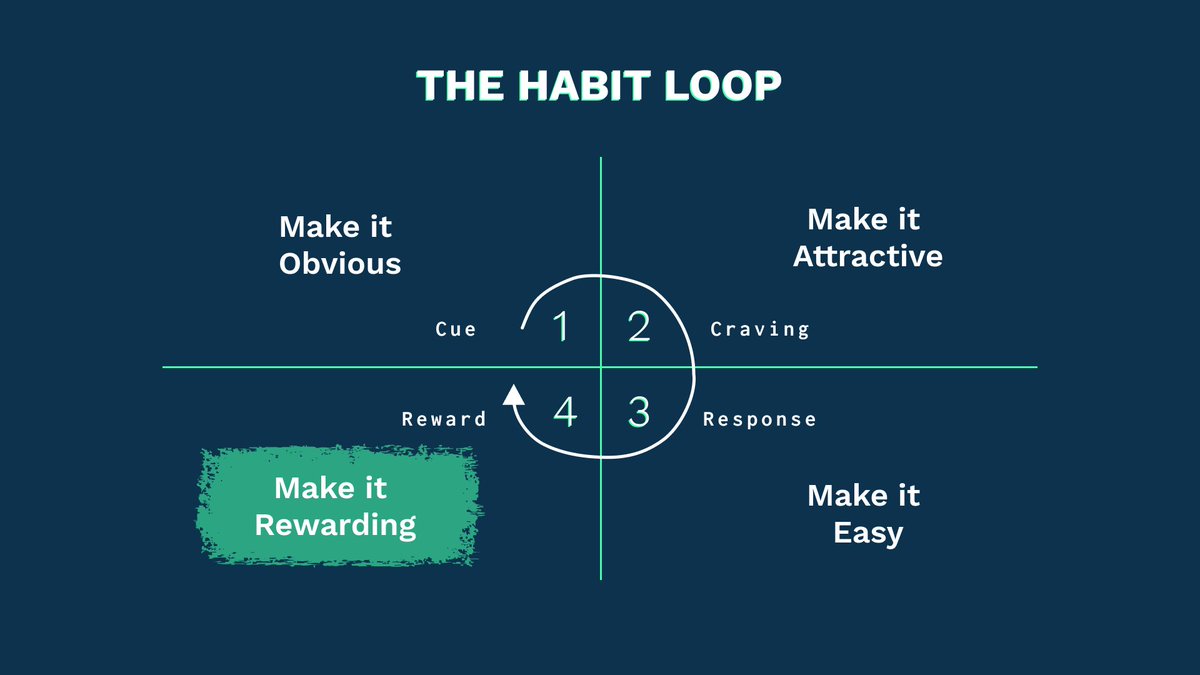[𝗧𝗛𝗥𝗘𝗔𝗗] 𝗔 𝘀𝘂𝗺𝗺𝗮𝗿𝘆 𝗼𝗳 𝗔𝘁𝗼𝗺𝗶𝗰 𝗛𝗮𝗯𝗶𝘁𝘀 by @JamesClear.
If you’re looking to transform your life, this is a good place to start.
If you’re looking to transform your life, this is a good place to start.
Tiny changes in your habits can make a big difference in your long term outcomes.
If an airplane adjusts its direction mid flight by just a few degrees, it will end up hundreds of miles from its initial destination.
Your habits are the tiny adjustments you can make to your life to help you reach a better destination.
Your habits are the tiny adjustments you can make to your life to help you reach a better destination.
Get 1% better each day, and you will end up 37 times better at the end of a year.
Get 1% worse each day, and you will end up close to zero at the end of a year.
Get 1% worse each day, and you will end up close to zero at the end of a year.
Stop focusing on goals, start focusing on systems.
Start becoming more concerned about your current trajectory than about your current results.
Start becoming more concerned about your current trajectory than about your current results.
We are usually transfixed with outcomes - what we want.
Occasionally we make changes to our processes - how we try to get what we want.
The best tactic is to change our identity - to become the kind of person that gets what we want.
Occasionally we make changes to our processes - how we try to get what we want.
The best tactic is to change our identity - to become the kind of person that gets what we want.
The best way to change our identity is to follow a 2 step process:
- Decide the type of person you want to be
- Prove it to yourself with small wins
- Decide the type of person you want to be
- Prove it to yourself with small wins
Once you decide who you want to be, follow the 4 step process to build and maintain the habits that define your new identity:
1. Make it obvious (Cue)
2. Make it attractive (Craving)
3. Make it easy (Response)
4. Make it satisfying (Reward)
1. Make it obvious (Cue)
2. Make it attractive (Craving)
3. Make it easy (Response)
4. Make it satisfying (Reward)
Redesign your environment to make the cues for your preferred habits more obvious.
Once the habit is formed, you will not need to be consciously aware of the cue in order to begin the habit.
Once the habit is formed, you will not need to be consciously aware of the cue in order to begin the habit.
Motivation is overrated.
Your environment matters more.
Increase your exposure to cues that trigger positive habits.
Reduce your exposure to cues that trigger negative habits.
Your environment matters more.
Increase your exposure to cues that trigger positive habits.
Reduce your exposure to cues that trigger negative habits.
To build a new habit, begin by creating an Implementation Intention.
Write down when and where you will perform an action.
Write down when and where you will perform an action.
Practice ‘Habit Stacking’ by ordering your habits consecutively, so that the end of one habit becomes the cue for the next.
With enough time, your brain will do this on autopilot.
With enough time, your brain will do this on autopilot.
Combine activities that you already like, with habits that you are trying to build.
Habits are a dopamine driven feedback loop.
By combining activities we like with habits we are trying to build, we train our brains to release dopamine in anticipation of performing a new habit.
By combining activities we like with habits we are trying to build, we train our brains to release dopamine in anticipation of performing a new habit.
One of the most powerful things you can do to build a new habit is to join a culture where your desired behaviour is the normal behaviour, and where you already have something in common with the group.
To reprogram your brain to enjoy difficult habits, learn to reframe negative feelings into positive feelings.
Reframe the mental feeling of ‘having to do something’ to ‘getting to do something’.
Reframe ‘I am nervous’ to ‘I am excited’.
Reframe ‘I am nervous’ to ‘I am excited’.
Make it as easy as possible in the moment to do things that pay off in the long run.
Reduce the friction associated with good behaviours, and increase the friction associated with bad behaviours.
Reduce the friction associated with good behaviours, and increase the friction associated with bad behaviours.
Energy is precious, and the brain is wired to conserve it whenever possible.
Prime your environment to make it easy to do good things, and difficult to do bad things.
Prime your environment to make it easy to do good things, and difficult to do bad things.
Use the ‘Two Minute Rule’:
Make the start of a new habit, a ritual that takes less than 2 minutes to do.
This will serve as an easy entry point into the rest of the activity.
Make the start of a new habit, a ritual that takes less than 2 minutes to do.
This will serve as an easy entry point into the rest of the activity.
Automate as much of your life as possible.
Make smart one time choices that automate your future habits.
Make smart one time choices that automate your future habits.
Repetition is key to building new habits.
The more you repeat an activity, the more the structure of your brain changes to become efficient at that activity.
Neurons that fire together, wire together.
The more you repeat an activity, the more the structure of your brain changes to become efficient at that activity.
Neurons that fire together, wire together.
Missing a habit once is an accident.
Missing it twice is the start of a new habit.
Missing it twice is the start of a new habit.
We live in a delayed feedback environment.
To train your brain to develop a liking to a habit that has a delayed positive impact, is to reward it with immediate pleasure.
To train your brain to develop a liking to a habit that has a delayed positive impact, is to reward it with immediate pleasure.
To get rid of habits that have a delayed negative impact, punish your brain with immediate pain.
The ending of any experience is vital.
We tend to remember it more than other phases.
Make the endings of your good habits something you look forward to.
Do the opposite for your bad habits.
We tend to remember it more than other phases.
Make the endings of your good habits something you look forward to.
Do the opposite for your bad habits.
What is immediately rewarded is repeated.
What is immediately punished is avoided.
What is immediately punished is avoided.
Learn to show up even when you are bored.
Even the most successful people get bored.
The difference is that they show up.
Even the most successful people get bored.
The difference is that they show up.
Learn to periodically review and fine tune your habits.
The downside of building strong habits is that we become less sensitive to little errors.
The downside of building strong habits is that we become less sensitive to little errors.
The tighter we cling to an identity, the harder it becomes to grow beyond it.
The ultimate purpose of habits is to solve the problems of life with as little energy and effort as possible.
Success is not a goal to reach or a finish line to cross.
It is a system to improve, an endless process to refine.
It is a system to improve, an endless process to refine.
The secret to getting results that last is to never stop making improvements.
It is remarkable what you can build if you just don’t stop.
It is remarkable what you can build if you just don’t stop.

 Read on Twitter
Read on Twitter![[𝗧𝗛𝗥𝗘𝗔𝗗] 𝗔 𝘀𝘂𝗺𝗺𝗮𝗿𝘆 𝗼𝗳 𝗔𝘁𝗼𝗺𝗶𝗰 𝗛𝗮𝗯𝗶𝘁𝘀 by @JamesClear.If you’re looking to transform your life, this is a good place to start. [𝗧𝗛𝗥𝗘𝗔𝗗] 𝗔 𝘀𝘂𝗺𝗺𝗮𝗿𝘆 𝗼𝗳 𝗔𝘁𝗼𝗺𝗶𝗰 𝗛𝗮𝗯𝗶𝘁𝘀 by @JamesClear.If you’re looking to transform your life, this is a good place to start.](https://pbs.twimg.com/media/EcK-dRbWoAAhWUa.jpg)
